The real long-term progress is coming from the manufacturers that are trying to turn their businesses into circular economies – re-using materials in the production of their new cars, and where that isn’t possible, searching for new, sustainable, environmentally-friendly and recyclable materials to replace traditional plastics and fabrics.
We’re the official car-recycling partner for many world-renowned vehicle manufacturers and all of these car makers are forward thinking. For a start, they were quick to partner with us to ensure their customers have a market-leading service to ensure responsible recycling of their end-of-life vehicles! But while that part of the process is vital, recycling has to be considered from the initial design.

We work with some truly innovative vehicle manufacturers, that have embraced this concept and are thankfully leading the way in sustainable car production.
We’ve taken a look at some of the more interesting and surprising developments that have been researched and that you may even find in your next car purchase…
Ford has to get an early mention in this area as they’ve been using Repreve – a hybrid fibre made from recycled plastic water bottles and post-industrial waste – as seat fabric in the Ford Focus since 2012. A number of other Fords including the Edge, Escape and C-Max, use post-industrial and post-consumer recycled yarns for seat fabric inserts and bolsters, and the company’s Fusion Energi vehicles all use recycled denim for carpets. In reverse, the Ford Escape uses nylon resin made from recycled carpets for its cylinder head covers.
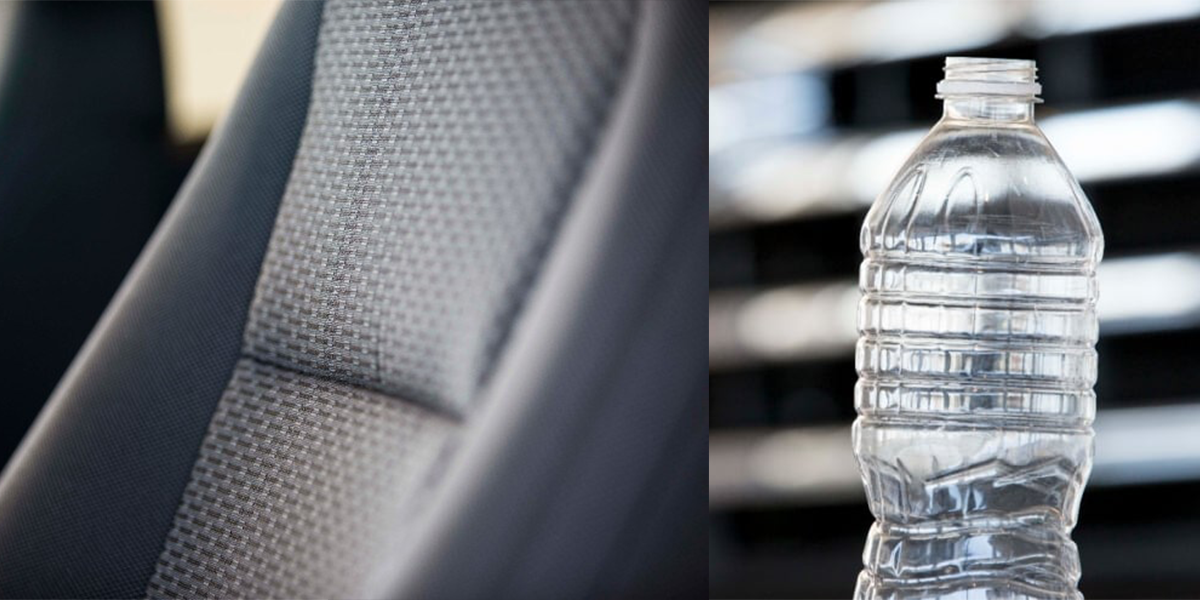
Photo Credit: Ford
Used plastic bottles aren’t just a popular recycled material in Fords. This durable waste product features in a few manufacturers’ cars, including Polestar, Volvo, Renault and Nissan. Nissan’s electric Leaf’s seats are also formed from a synthetic material made from old PET (polyethylene terephthalate) soda bottles.
The fabric used for the seating surface in Polestar’s Precept is a 3D knit material also made using yarn from recycled PET bottles. Not only is it utilising recycled materials, but any further waste is minimised in the production process, as the fabric is cleverly made exactly to size, with no off-cuts. The Precept also contains discarded fishing nets, which are used to make nylon 6 and woven into Econyl carpets for the interior!
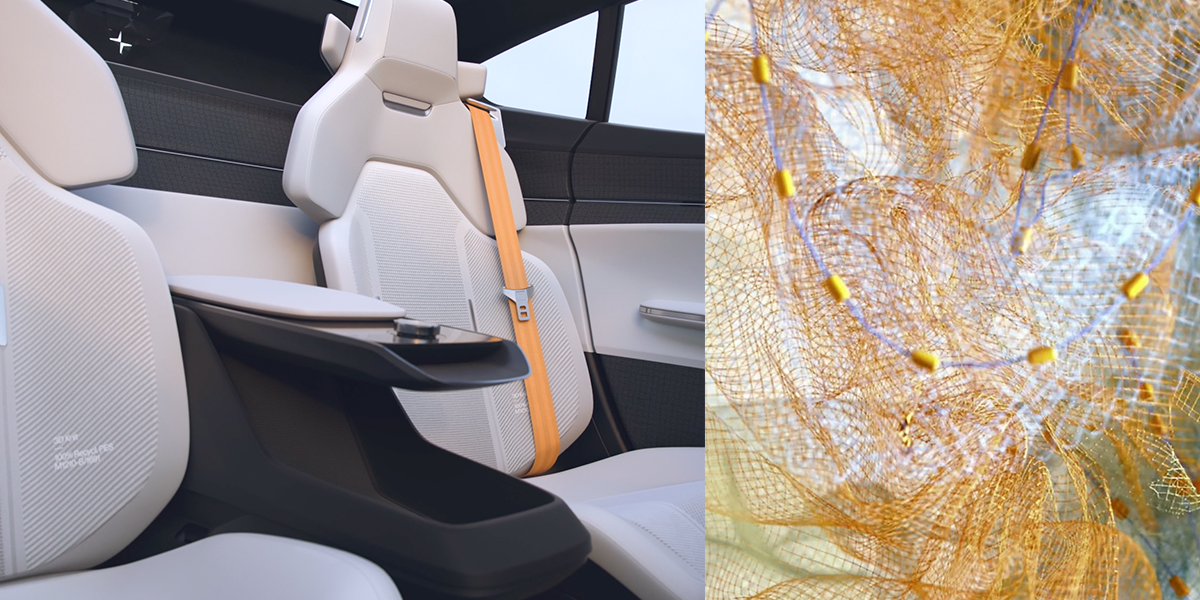
Photo Credit: Polestar
So far we’ve covered discarded plastic bottles, old jeans and washed up fishing nets, and we still haven’t covered all the innovative solutions car manufacturers have utilised for car seats, upholstery and carpets…
Renault has worked with fabric specialist Les Filatures du Parc and seat supplier Adient Fabrics to create a cabin material that is 100% recycled. Using old safety belts, textile scraps and yet more plastic bottles, the Renault’s Electric Zoe features 8 sqm of this fantastic fabric for seat covers, dashboard coverings, gear lever brackets and door fittings! Renault says manufacturing this material, without chemical or thermal transformation, cuts CO2 emissions by more than 60% compared to the fabrics made from a standard manufacturing process, so that’s another win for the environment.
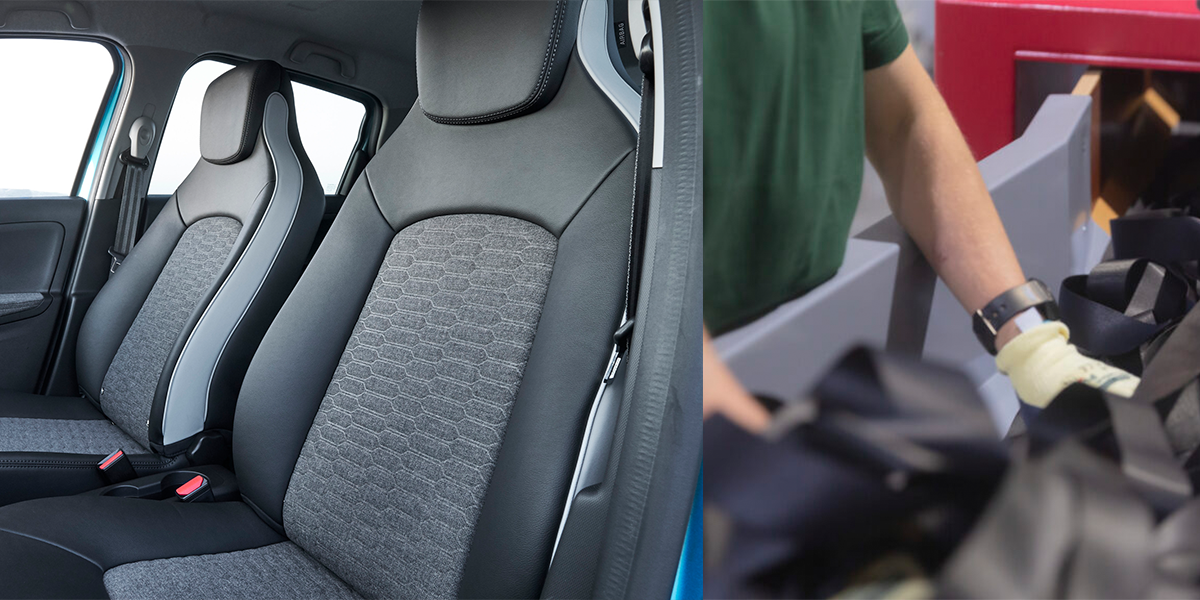
Photo Credit: Renault
Volvo has developed an interior material called Nordico, which not only contains the never-ending waste PET bottles, but also uses bio-attributed material from sustainable forests in Sweden and Finland, and corks recycled from the wine industry. (That’s not going to be the first mention of the wine industry helping out car makers.)
High quality alternatives to leather interiors are now common across the industry, with Mazda offering a leatherette that uses water instead of solvents in the manufacturing process, and Aston Martin’s vegan alternatives, produced as part of its branded ‘Racing.Green.’ sustainability strategy.
Now we get to external car body parts, your expectation of material performance is probably even higher. Our car manufacturers don’t disappoint! They’ve developed some surprising and impressive solutions, some of which are on production lines today and others that might be part of future manufacture…
Ford is doing more brilliant work using those pesky plastic bottles – they are already being used to produce underbody shields on all of their cars and SUVs (a part that has apparently become invaluable over the last decade to aid aerodynamics). Ford says it uses about 250 bottles per vehicle on average, which totals a staggering 1.2 billion plastic bottles recycled by Ford every year.
Moving away from plastic for a moment, and onto a car part that can be very clearly seen, Citroën has actually developed a bonnet and roof made from cardboard. Yes you did read that right. So far this material has only featured on a concept car, but the lightweight cardboard honeycomb structure they’ve developed is claimed to be stronger than steel and there is clear ambition for more widespread use. Citroën has been using ‘green materials’ such as recycled plastics, natural-origin materials (wood, plant fibres, etc.), and biosourced materials (polymers made from renewable resources instead of petrochemicals) since 2008.
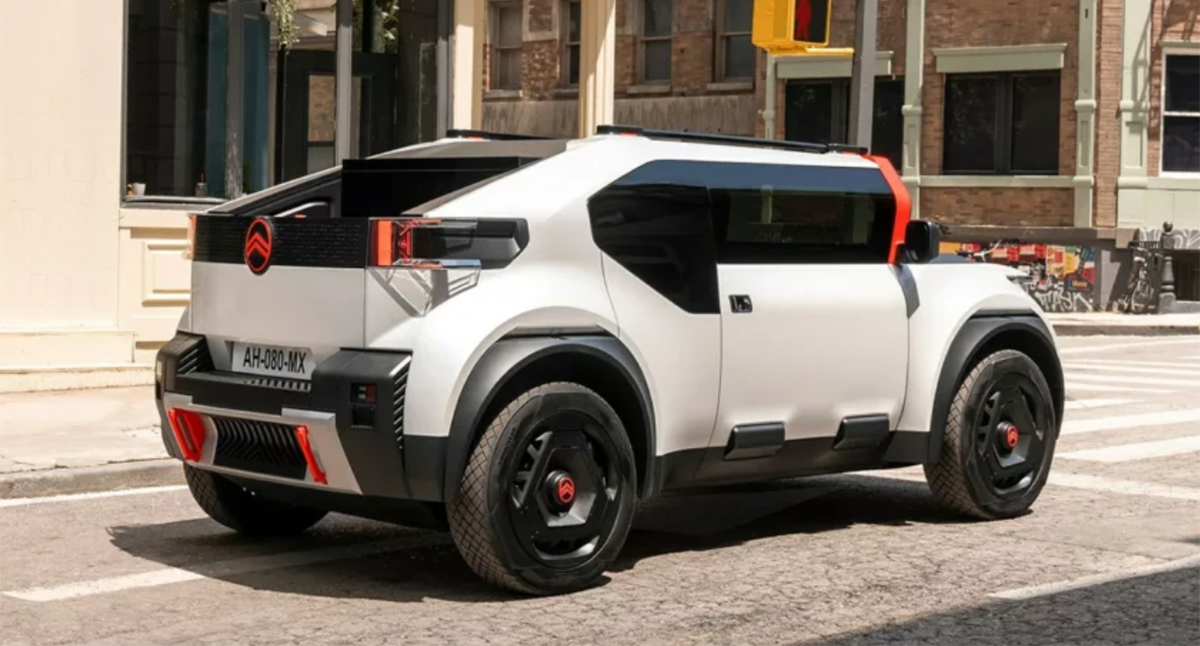
Photo Credit: Citroen
Cardboard car parts are clearly a while away from mass production, but luckily the most widely used material – metal – is one of the most effective and efficient materials to recycle, which we explain in our global recycling facts blog. Jaguar says that between 2013 and 2020, they reprocessed 360,000 tonnes of closed-loop scrap into lightweight aluminium vehicle architectures. Nissan has also trialed a closed loop recycling system to produce their Rogue model. The hood and doors are stamped from sheets of recycled aluminium, with the scrap metal collected and put straight back into production, providing an efficient cycle of manufacture.
As well as this impressive recycled aluminium system, Nissan also uses plastics recycled from bumpers to create the same part new. In the Nissan Leaf, recycled clothes are reconstituted to form sound insulation under the bonnet.
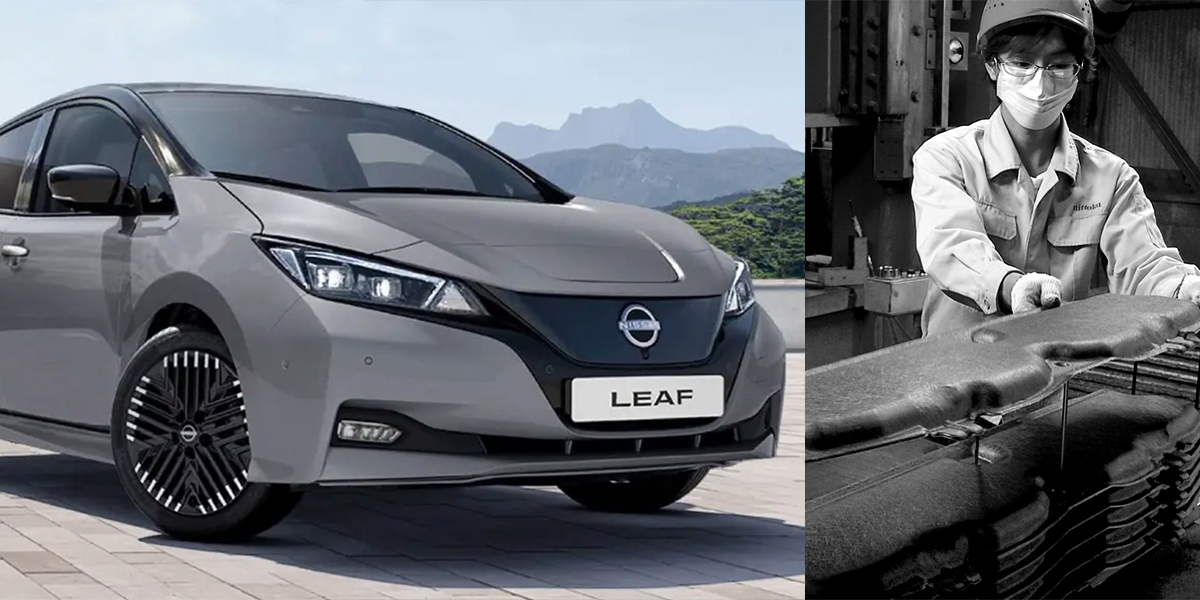
Photo Credit: Nissan
Other manufacturers doing great things with recycled polypropylene in external body parts include Peugeot, that uses this material in spoilers and bumpers, and Mitsubishi in its I-Miev electric car’s front and rear bumpers. Mitsubishi also recycles old bumpers for new car battery trays.
In what is generally expected to be the most luxurious part of a car, it’s reassuring that many manufacturers are still looking to deliver sustainability and utilising recycled plastics in their interiors. Among others, Mazda is using recycled PET plastic bottles for internal door panels, the main component in Nissan’s dashboard sound insulation is plastic fibres made from used bottles, and Mitsubishi’s I-Miev has an instrument panel and door trim made from recycled polypropylene.
While it’s fantastic, and indeed essential, for recycled plastics to be used, we had to admit we were hoping to discover some more obscure materials that were making their way into car interiors, and we found several to raise a glass to… The wine industry has soberly made its way into another area of car manufacture – Polestar is using waste material from the cork manufacturing process in the interior of its Precept model. Even whole bottle stoppers can be integrated into PVC interior components.
If you were surprised to hear about the innovative use of wine corks, you’ll love this… Ford have started work with the Jose Cuervo® Tequila company. Not on a road-salt sachet, but together, they’re exploring the use of agave by-product to create more sustainable bioplastics as it has impressive durability and aesthetic qualities. As it happens, making tequila produces hundreds of pounds of agave waste fibres daily, most of which are disposed of. This unlikely company couple is now testing agave bioplastic in both interior and exterior vehicle components, including wiring harnesses, HVAC (heating, ventilation and air conditioning) units and storage bins.
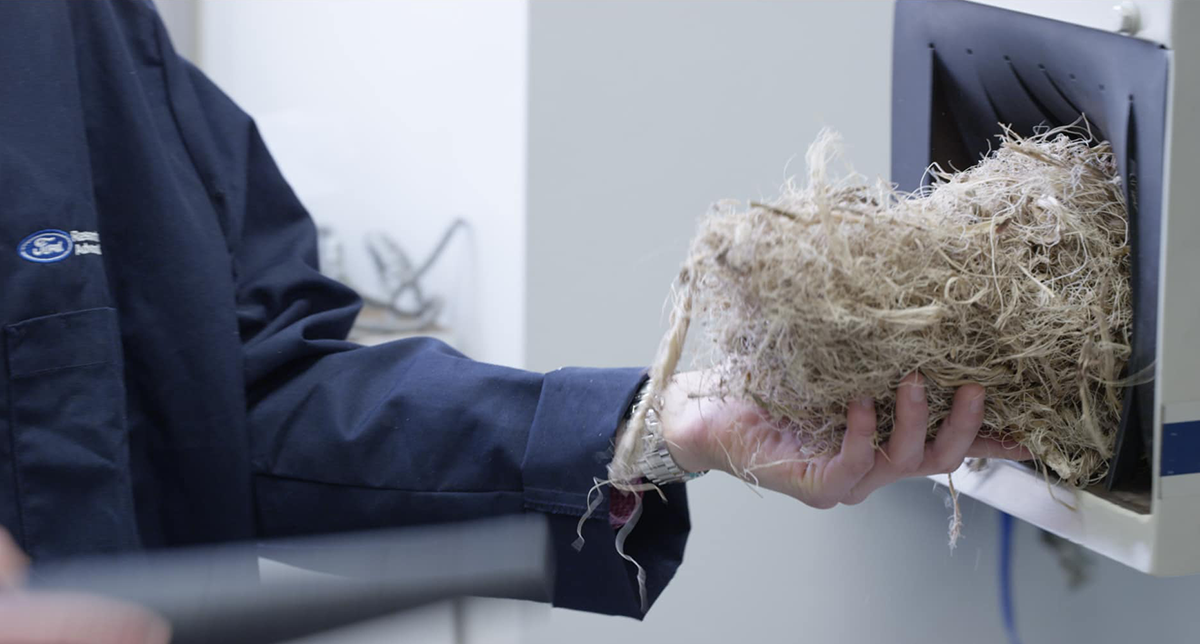
Photo Credit: Ford
Ford actually boasts using eight sustainable-based materials, including soy foam, castor oil, wheat straw, kenaf fibre, cellulose, wood, coconut fibre and rice hulls. The rice hulls, which are a by-product of rice grains sourced from U.S. farms, are used to reinforce a composite plastic, introduced in a Ford wire harness back in 2014.
Back to another manufacturer that’s already impressed… Nissan, not satisfied with providing a new home for old clothes, is using plastics within the interior of its Leaf model made from repurposed waste electrical appliances e.g. your old fridge! Working with UBE, Nissan is using plastic pellets from this creative waste stream, which can be melted down and blended in with raw product for use in the car. So, old electrical appliances such as refrigerators and washing machines find new life as the Leaf’s centre console.
It’s not just individual car manufacturers focussed on finding new sustainable materials. Innovative design and engineering firm CALLUM have created and tested numerous exciting solutions for the future of car interiors. On the basis that the UK wastes thousands of tonnes of food every day, they consulted with green-tech company Ottan and concluded coffee pulp, eggshells, red lentils, walnuts and rice were all viable materials for car interiors, replacing plastics while meeting the engineering and design requirements of a car. The wine corks we referred to earlier are suddenly sounding pretty normal.
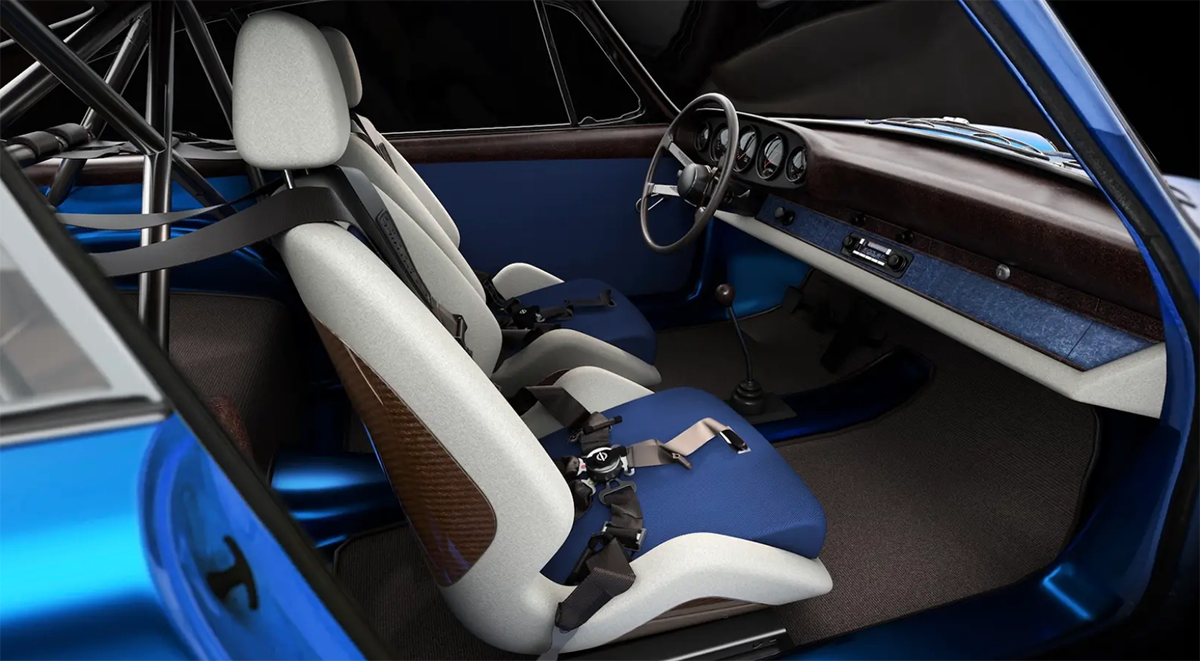
Photo Credit: CALLUM Design
CALLUM found that eggshells mixed with resin made a smooth opaque material, with a matt or glossy surface, that could be used in applications such as the trim surround for window switches. Out of date rice or lentils can be turned into a smooth translucent material suitable for lamp covers or illuminated switches, and coffee pulp could replace traditional plastics for a glossy, decorative trim such as dashboard inserts. CALLUM even achieved vivid colours in these sustainable materials, for instance, purple carrot pulp was used effectively to produce a mulberry-like colour for trim parts.
It may sound unrealistic for mass production, but when you look at the progress that has already been made across the industry and in some cases is years into production, we wouldn’t be surprised to see any of these solutions in wide-use by the end of the next decade. Peugeot is already using natural hemp fibres for dashboard reinforcements and that is something you probably wouldn’t have imagined back in 2010.
Batteries are a tricky recycling issue all on their own and while many companies and car makers are involved with developments in this specialist area, the manufacturer we have to highlight is undoubtedly Tesla. Now also recycling batteries for other car manufacturers, Tesla’s own factories are implementing an in-house, closed-loop recycling system to ensure 100% of Tesla batteries received are recycled and up to 92% of their raw materials are used.
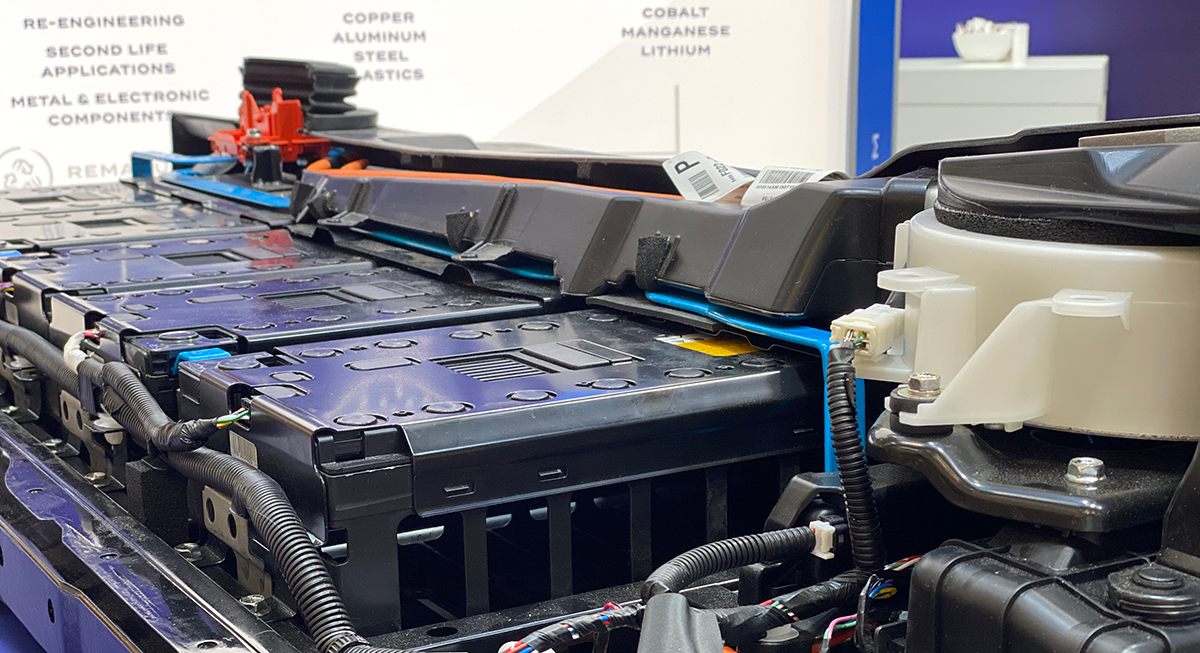
Photo Credit: Ecobat
Another company that deserves acknowledgment in this field is Ecobat Solutions. Based here in the UK, it’s now the world’s biggest recycler of batteries, and in fact the world’s largest producer of lead – from the 99% recycling rate of traditional batteries. Recent innovations, and the passion to ensure the same sustainability and circularity is in place to support EV adoption, means Ecobat now offers a full service for EV batteries. Available to all vehicle manufacturers, and an important part of CarTakeBack’s own EV recycling service, Ecobat is careful to re-engineer batteries when they are capable of further operation, or, if it is truly at the end of its life, sent to first-stage recycling with the precious metals put back into the supply chain for new battery manufacturing.
When you started reading this blog we bet you didn’t think your car could already contain jeans, fishing nets and wine corks! What we think every car manufacturer would want us to highlight, is that while these new materials have all been produced primarily to provide a solution to the resource crisis we face as a globe, their production and use has not jeopardised the quality, safety, durability and even luxury that these brands would consider their cars to provide. In fact in some cases they may well argue these qualities have been enhanced using the sustainable materials they’ve carefully researched and developed.
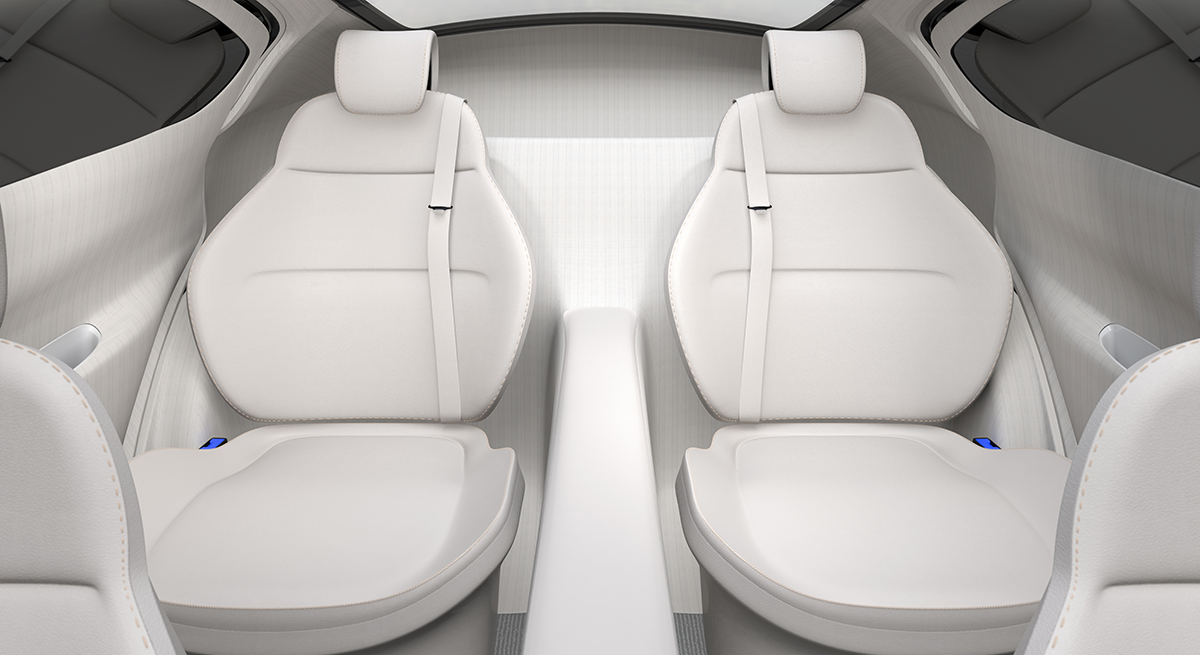
Whether requirements for car parts are comfort, cleaning, UV resistance, thermal or mechanical durability, strength or aesthetic appeal, recycled products can have the same technical specifications as new ones. High quality and high performance are key to successful applications and let’s be honest, car sales!
We hope you’ve enjoyed learning a little more about sustainable car manufacturing, and next time you consider a new car maybe you can ask about what that company is doing to ensure its cars can be recycled effectively.




